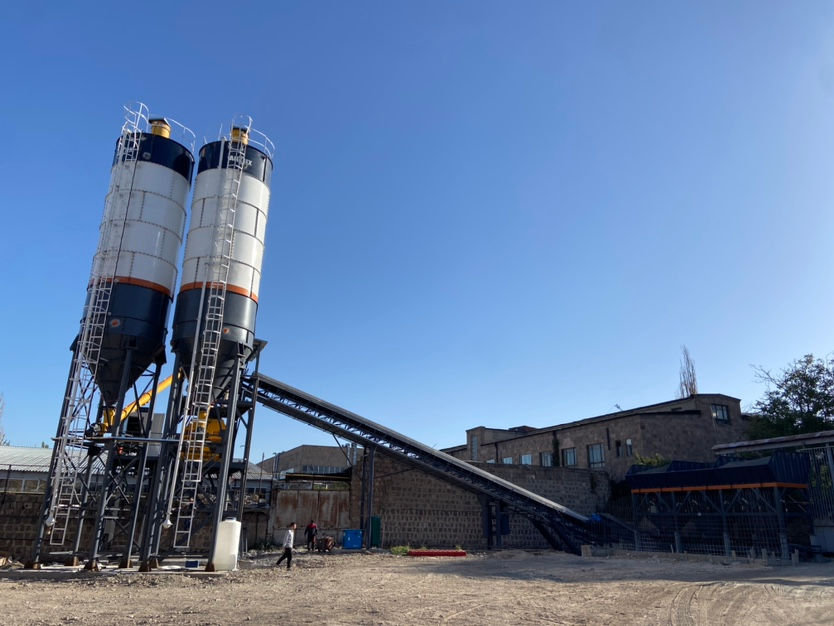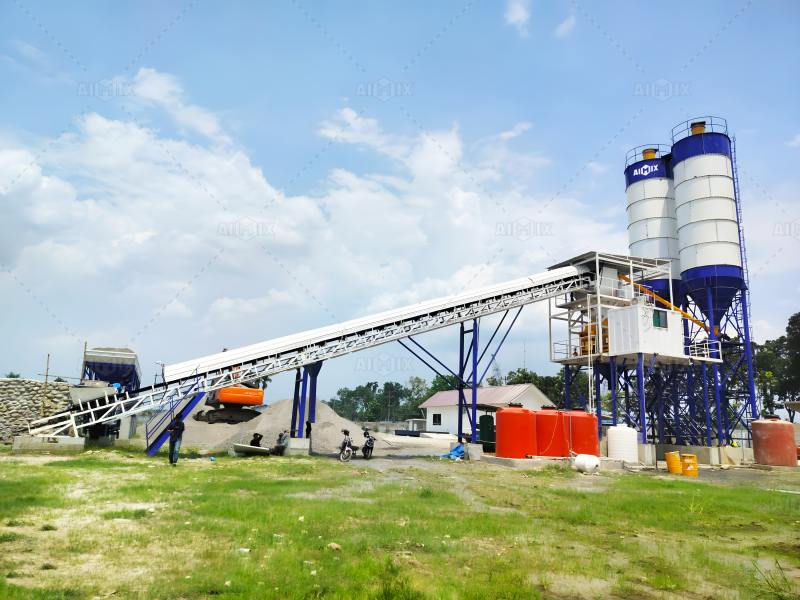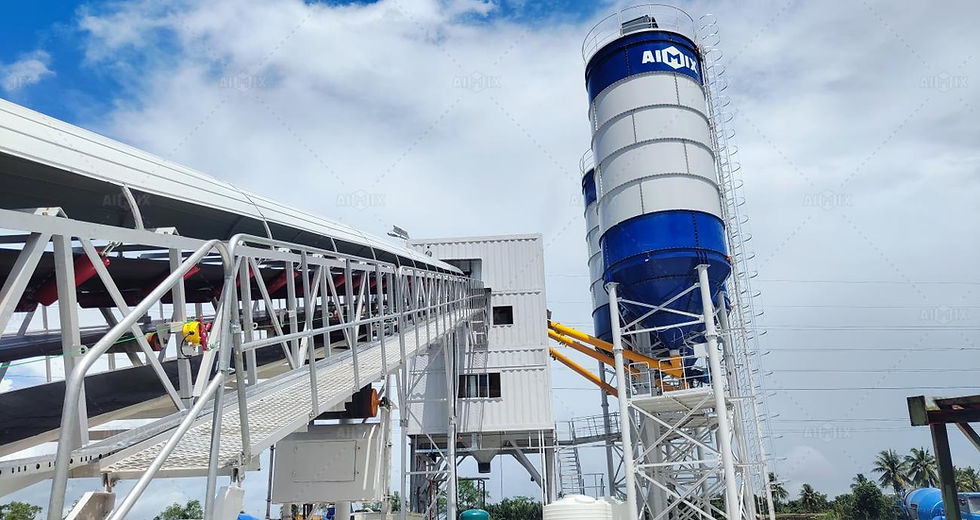How Site Conditions Can Influence Your Concrete Batching Plant Cost
- aimixglobal5
- Jul 29
- 4 min read
When planning a concrete production facility, most investors focus on equipment specifications, output capacity, and pricing from suppliers. However, a frequently overlooked but critically important cost driver is the condition of the site itself. Site-specific factors such as terrain, soil quality, climate, accessibility, and utility availability can significantly impact the overall concrete batching plant cost—both upfront and over time.
If you're researching how to start a concrete batching plant, understanding how your project's location will affect total investment is key to avoiding budget overruns and ensuring smooth long-term operation.

1. Terrain and Land Preparation
One of the first and most obvious cost influencers is the topography and soil condition of your plant site. Unlike plug-and-play equipment that can be installed anywhere, a concrete batching plant requires a stable, level foundation with strong load-bearing capacity.
Key factors include:
Uneven or sloped land may require extensive grading, retaining walls, or even terracing, adding significantly to civil work expenses.
Soft or loose soil may necessitate ground improvement (e.g., compaction, geogrid reinforcement) to prevent settling and cracking.
Rocky sites might require blasting or heavy excavation, which increases preparation cost.
A flat, accessible, and well-drained plot with compact soil will dramatically lower your initial concrete batching plant cost.
2. Site Accessibility and Logistics
If your site is located in a remote or hard-to-reach area, logistics challenges can quickly inflate costs. Heavy equipment and plant components must be delivered, sometimes using special trailers or cranes. Poor access roads may require temporary improvements just for delivery.
Cost impacts may include:
Additional transportation charges from suppliers
Temporary road or bridge reinforcements
Time delays due to limited access for materials or crew
For those asking how to start a concrete batching plant in rural or infrastructure-limited regions, factoring in these hidden logistical costs is essential during planning.
3. Utility Availability
Concrete batching plants rely on stable access to electricity, water, and sometimes compressed air. If your chosen site lacks one or more of these utilities, you may need to invest in additional infrastructure:
Electricity: Installing new transformers or connecting to the grid can be expensive, especially in rural areas.
Water: You may need to drill boreholes, install tanks, or set up a water recycling system.
Drainage systems: Plants require drainage for stormwater and process water to prevent flooding and environmental violations.
These utility setup costs can add tens of thousands of dollars to your total concrete batching plant cost, depending on site location.

4. Local Permits, Zoning, and Regulations
Site conditions are not just physical—they’re also legal and regulatory. Local land-use laws, environmental restrictions, and permit processes vary greatly across regions. A site located in a heavy industrial zone will generally face fewer regulatory hurdles than one in a mixed-use or agricultural area.
Possible costs include:
Environmental impact assessments (especially near water bodies)
Sound and dust mitigation measures (e.g., enclosures or barriers)
Legal consultations or land rezoning
If you're exploring how to start a concrete batching plant, engage with local authorities early to determine what compliance measures your site will require.
5. Climate and Weather Considerations
Climate conditions affect not just construction but the design and operational cost of the plant.
For example:
Heavy rainfall zones may require better drainage systems, elevated foundations, and covered material storage to prevent contamination.
Extremely hot climates might require insulated water tanks or chilled mixing water to meet concrete temperature specs.
Cold regions often need heating systems for water, aggregates, or even the plant itself.
Adapting your plant to these environmental demands can significantly increase the upfront investment and ongoing energy costs.
6. Noise, Dust, and Environmental Constraints
If your batching plant is located near residential areas, schools, or protected zones, you may need to invest in noise reduction, dust collection, or wastewater treatment systems to comply with local regulations.
These may include:
Enclosed conveyors and mixers
Dust suppression systems
Soundproofing control rooms
Landscaping or fencing to reduce visual impact
These environment-related upgrades can easily add 10–15% or more to your overall concrete batching plant cost, but they are often mandatory to secure permits and ensure community acceptance.
7. Site Layout and Traffic Flow
Inefficient site layout due to limited land size or irregular shape can also drive up costs.
Tight spaces might require custom layout adjustments and additional structural steel.
Poor truck flow design can cause traffic jams and slow loading, reducing plant productivity.
Split-level sites may require conveyor extensions, pumps, or custom platforms.
When learning how to start a concrete batching plant, consider bringing in a plant layout expert or engineer to optimize land usage and avoid expensive future redesigns.

Conclusion: Site Conditions Are a Cost Multiplier
While batching plant equipment makes up a large portion of your capital expense, site conditions can dramatically amplify your total concrete batching plant cost—especially if overlooked during planning.
If you’re at the early stages of exploring how to start a concrete batching plant, be sure to:
Conduct thorough geotechnical and site feasibility studies.
Get accurate quotations for civil work and utility setup.
Engage local authorities early to understand compliance requirements.
Choose a supplier that offers custom layout design to match your site.
By proactively addressing site conditions, you can avoid costly surprises and ensure your plant runs smoothly and profitably from day one.







Comments